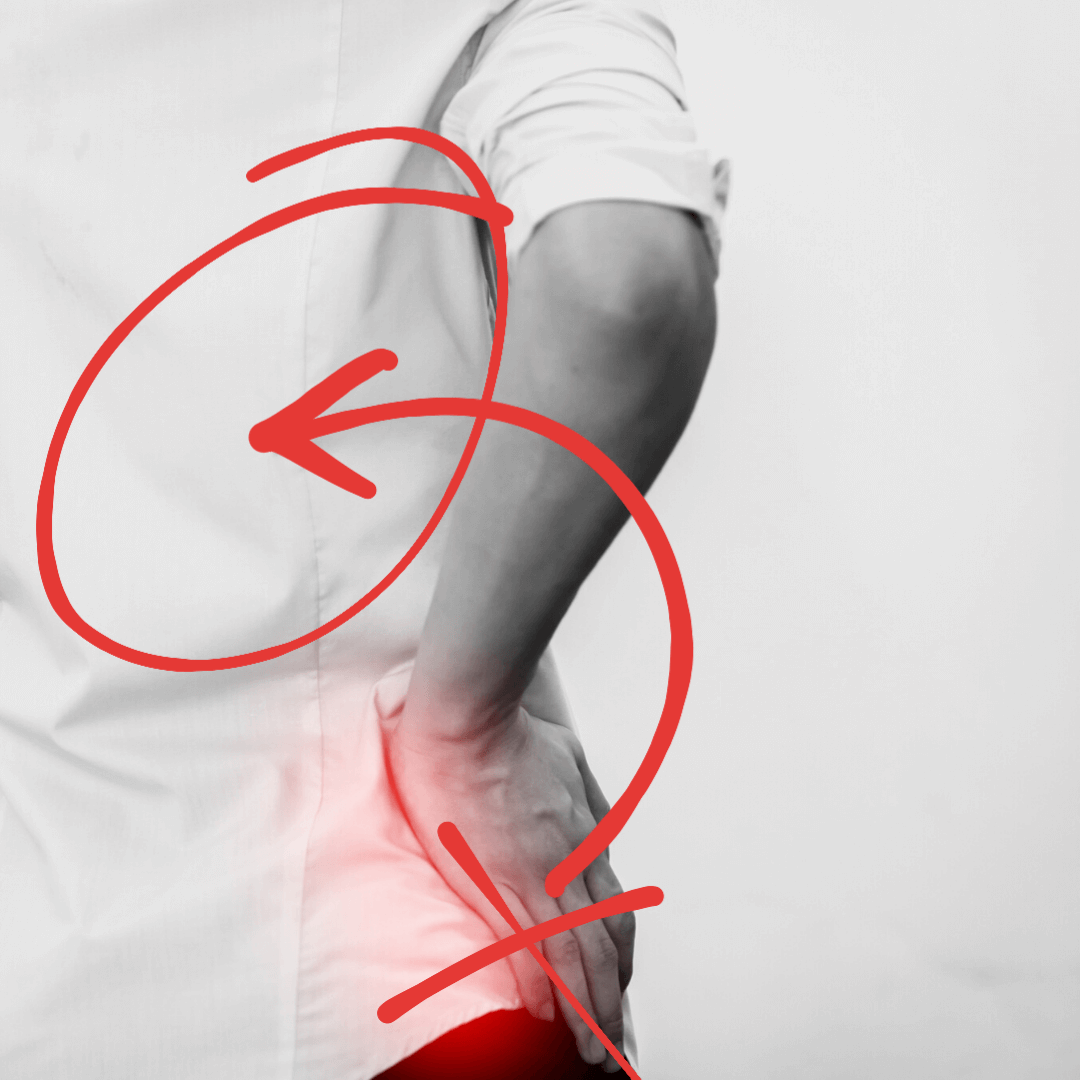
Hip Bursitis Treatment: Why Your Lower Back is the Root Cause
If you're struggling with persistent hip bursitis, you might be focusing all your treatment on the hip itself. But what if the real root of the problem lies elsewhere? As a Physiotherapist, I consistently find that lower back dysfunction is a primary, yet often overlooked, cause and perpetuator of hip bursitis.
This guide will walk you through the vital connection between your spine and your hip pain and provide a comprehensive, actionable plan for lasting relief.

For a visual overview, the key structures involved in hip bursitis are the trochanteric bursa, gluteal muscles, and gluteal tendons.

The most common pain pattern for hip bursitis is on the outside of the hip. While pain here doesn't guarantee bursitis, most people with the condition experience discomfort in this area.

The Critical Role of the Lower Back in Hip Bursitis
It may seem strange to look at your back for a hip problem, especially if you have no back pain. However, the nerves that control your hip's movement, sensation, and function all originate from your lower spine.

This image shows dermatomes—neural connections between spinal levels and specific body areas. The hip is primarily supplied by nerves from the T12 to L5 levels. If these spinal segments become stiff or dysfunctional from poor posture or loading, it can create a "kink in the hose," weakening and deactivating your hip muscles and setting the stage for bursitis.
Simple Test: Is Your Back Affecting Your Hip?
This video demonstrates a simple test to see if your lower back is inhibiting your glute strength. Test your glute strength, mobilise your lower back, and then re-test. An immediate improvement in strength or reduction in pain strongly suggests your back is a key factor.
A Modern Hip Bursitis Treatment Protocol
While traditional treatments like ice and anti-inflammatories have their place, a modern approach that includes the lower back is far more effective for long-term results.
- Embrace Relative Rest: Avoid activities that cause sharp pain, but keep moving. Complete rest leads to deconditioning and slower recovery.
- Rethink Ice and Medication: While useful for severe pain, these can mask your body's natural healing signals. Use them sparingly.
- Use Deep Breathing for Pain Management: Slow, controlled breathing down-regulates your nervous system, naturally reducing pain perception.
Step 1: Improve Hip Mobility and Strength
Free up tight tissues and build a strong foundation.
Hip Mobility Drills
Use a lacrosse ball to release gluteal tightness. Follow with deep hip mobility stretches, using a resistance band to increase effectiveness.
Hip Strength Exercises
Focus on isolated exercises first, then progress to functional movements.
- Side-Lying Hip Abduction: 3 sets of 12 reps.
- Clamshells (Hip External Rotation): 3 sets of 12 reps.
- Squats and Lunges: 3 sets of 10-15 reps. Remember: "Feet straight, knees out."
Step 2: Treat the Underlying Back Dysfunction
This is the crucial step most protocols miss.
- Mobilise Your Lower Back: Use a foam roller or lacrosse ball to gently release stiffness around your spine. Spend 15-20 minutes finding and working on restricted areas.
-
Build Core Strength: Focus on exercises that teach you to maintain a stable spine.
- Planks: 5 sets of 15-30 second holds.
- Fit Ball Roll-Outs: 3 sets of 10 reps.
- Prioritize Good Posture: Avoid slouching throughout the day. Sitting on an exercise ball instead of a chair can help engage your core muscles.
Hip Bursitis FAQs
Under the right conditions, yes. Long-term success relies on treating the underlying cause, which is often lower back dysfunction. While it may resolve on its own, without addressing the root cause, there's a high chance it will return.
The hip bursitis itself doesn't typically cause knee pain. However, the weakness and movement changes from hip dysfunction can lead to knee issues. Alternatively, the same lower back problem causing your hip pain can also refer pain to the knee.
Losing weight can reduce load on the inflamed bursa and help manage symptoms, but it is unlikely to solve the root cause, which is often neuromuscular dysfunction from the spine.
If you'd like personalised help uncovering the root cause of your hip pain, book a Telehealth consultation with Grant here!

